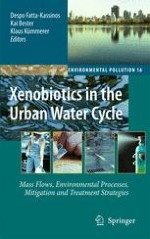2010 | OriginalPaper | Chapter
8. Determination of Sources and Emissions of Persistent Organic Contaminants by Means of Sewage Sludge: Results from a Monitoring Network
Authors : Thomas Kupper, Luiz Felippe de Alencastro, Jean-Daniel Berset
Published in: Xenobiotics in the Urban Water Cycle
Publisher: Springer Netherlands
Activate our intelligent search to find suitable subject content or patents.
Select sections of text to find matching patents with Artificial Intelligence. powered by
Select sections of text to find additional relevant content using AI-assisted search. powered by
